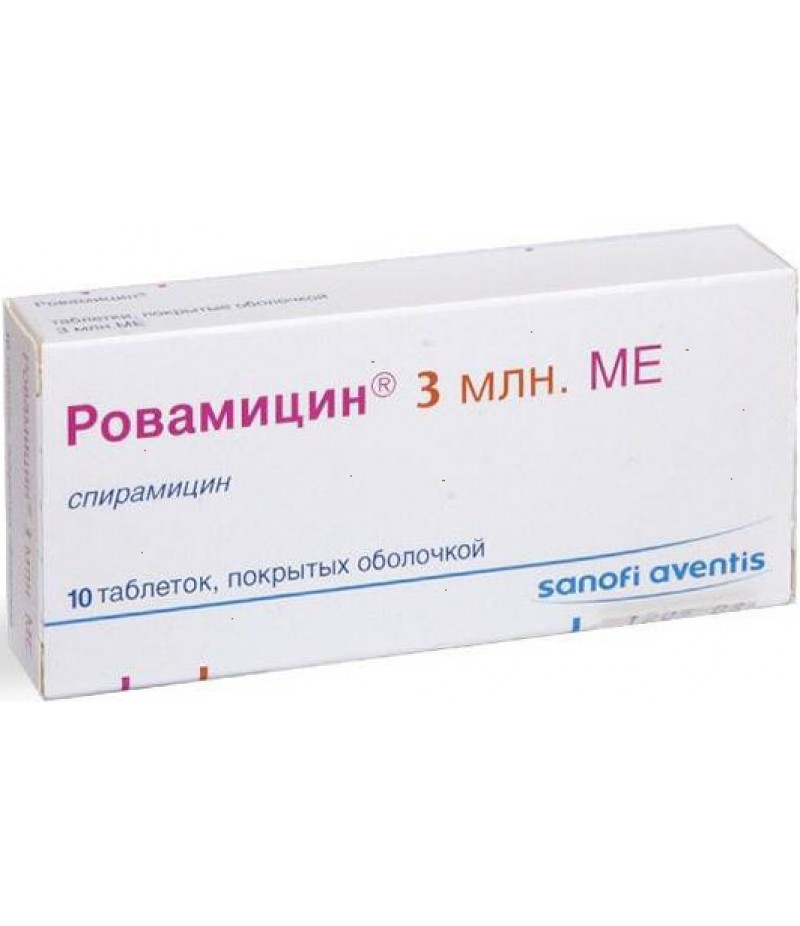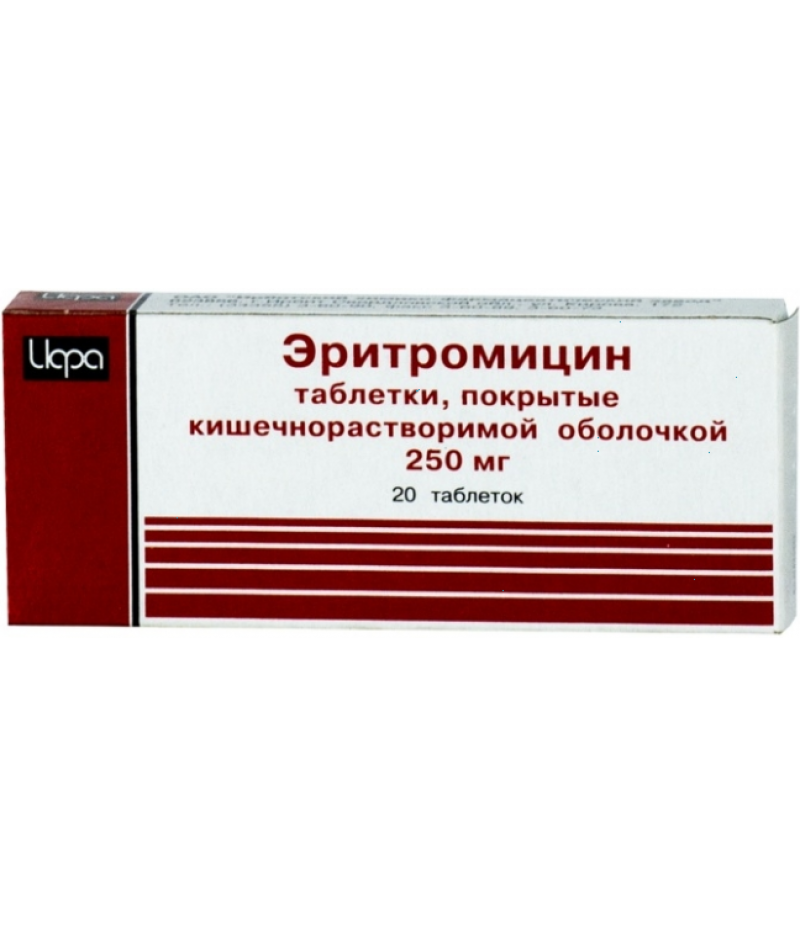Rovamycine tabs 3000000ME #10
- $52.98
- 2 or more $51.50
- 3 or more $49.99
- Availability:In Stock
Rovamycine antibiotic instruction for useYou can buy Rovamycine on this pageCompositionThe composition of the drug includes the active component: spiramycin.Additional components: silicon anhydrous colloid, magnesium stearate, sta..
Tags: tabs
Rovamycine antibiotic instruction for use
You can buy Rovamycine on this page
Composition
The composition of the drug includes the active component: spiramycin.
Additional components: silicon anhydrous colloid, magnesium stearate, starch, hydroxypropylcellulose, MCC, sodium croscarmellose.
Form of issue
Rovamycine is produced in the form of tablets and powder. Tablets are packaged in blisters of 8 and 5 pieces, 2 blisters per pack. Lyophilized powder intended for the preparation of a solution, which is used for intravenous administration, is placed in a vial and in a package.
pharmachologic effect
The drug has antibacterial action.
Pharmacodynamics and pharmacokinetics
The antibacterial activity of Rovamycine is directed to streptococci, staphylococci and enterococci. Also sensitive to it are some other microorganisms and strains, provided a high concentration of active substance in the body.
Spiramycin is characterized by rapid, but not complete, absorption, which is 10-60%.
After ingestion or intravenous administration of the drug in increased dosage every 8 hours, the maximum concentration of the substance is achieved on the second day of therapy.
Spiramycin penetration and accumulation in tissues and physiological fluids were noted. The drug penetrates the placental barrier and enters the breast milk. From the body, the antibiotic is excreted slowly enough, in the bile and even 10 days after cessation of treatment, its concentration in some organs is determined. Metabolism Rovamycine occurs in the liver, resulting in the formation of active metabolites.
Indications for use
The drug in tablets is administered when:
infectious diseases that cause sensitive microorganisms affecting the ENT and lower respiratory tract, for example, during the treatment of tonsillitis, sinusitis, pneumonia, exacerbations of chronic bronchitis;
infections of bones and joints;
infections of periodontal, skin and soft tissues;
infectious diseases of the reproductive system;
preventive treatment of meningococcal meningitis, relapses of acute forms of articular rheumatism, is prescribed to patients with allergies to penicillin;
toxoplasmosis.
Intravenous administration of the drug is recommended for:
acute pneumonia;
exacerbations of chronic bronchitis;
infectious-allergic asthma.
Contraindications
Rovamycine is not prescribed for:
sensitivity to it;
lactation;
Treatment of patients with a deficiency of the enzyme glucose-6-phosphate dehydrogenase.
Tablets are not recommended for children under 3 years at a dosage of 1.5 million IU, up to 18 years - in a dose of 3 million IU.
The injection form is contraindicated for use by patients under 18 years of age, with simultaneous treatment with cardiac drugs.
Careful use is required in the treatment of:
obstruction of the bile duct;
liver failure.
Side effects
When taking tablets, side effects can occur that affect the functioning of the digestive tract, liver, cardiovascular system and hematopoiesis. At this time, unwanted symptoms may appear in the form of: nausea, vomiting, diarrhea, pseudomembranous colitis, cholestatic hepatitis.
It is also possible the manifestation of hypersensitivity reactions: hives, irritations and rashes on the skin, itching, swelling and shock.
With the intravenous administration of the drug solution, the development of irritation through the veins and skin reactions is not ruled out.
Rovamycine, instructions for use (Method and dosage)
Instructions for use Rovamycine recommends taking the pills inside. In this case, adult patients are prescribed a daily dosage of 4-6 pieces of Rovamycine 1500000 ME or 2-3 pieces of Rovamycine 3000000 ME for a 2-3-time intake.
For children, the drug is prescribed taking into account the body weight and only in a dosage of 1.5 million IU, since 3 million ME tablets are not prescribed for the treatment of children.
A solution for intravenous administration may be administered only to adult patients. It is injected slowly, at an interval of 8 hours, to 1.5 million ME. In the treatment of severe infectious diseases, an increase in the dosage of 2 times is possible.
Overdose
No cases of spiramycin overdose have been established.
Interaction
The use of the drug Rovamycine 3000000 IU simultaneously with levodopa and carbidopa can lower the level of Levodopa in the plasma. Therefore, clinical control and dosage adjustment are required.
During application of the solution for introduction into a vein together with ergot alkaloids, maximum caution is required.
Combination with antiarrhythmic and non-antiarrhythmic drugs can lead to the development of ventricular arrhythmia. The intake of potassium-withdrawing diuretics, GCS, laxatives and tetracosactide can lead to hypokalemia and bradycardia. Also, the development of bradycardia can cause simultaneous use of the drug with calcium channel blockers, for example, Diltiazem, Verapamil, beta adrenoblockers, Clonidine, Guangfacin, some cholinesterase inhibitors - Donepezil, Rivastigmine, Tacrine, Galantamine.
Therefore, before the appointment of this drug must eliminate hypokalemia. Also, regular monitoring of the general condition, electrolyte level, and ECG is required.
Storage conditions
The drug can be stored at room temperature, in a place protected from babies.
Shelf life - 3 years.
How to use Rovamycine during pregnancy
It is established that this drug can be used during pregnancy. Especially often during this period it is prescribed in the treatment of toxoplasmosis. At the same time, there was no negative impact on fetal development.
Reviews about Rovamycine
This antibiotic is widely used in clinical practice. Therefore, reviews about Rovamycine are found in various medical forums. At the same time, users confirm its high efficiency.
Quite often you can find reviews about Rovamycine during pregnancy. He is appointed to treat infectious diseases in pregnant women. This is entirely acceptable, since studies have not shown the likelihood of developing teratogenic effects. That is, taking the drug does not cause fetal pathologies or mutations.
Often, patients are asked whether it is possible to take the drug to children. But as indicated in the instruction, tablets can be taken to small patients from 3 years old, and Rovamycine 3 million IU - only from 18 years, as well as a solution for intravenous administration.
Sometimes there are reports of the development of side effects during treatment. In most cases, they manifest in the form of allergic reactions, for example, itching, hives, irritation and other. In some cases, it is described that the treatment was useless, for example, in chlamydia.
Thus, it can be understood that the drug helps to cure infectious diseases only with an individual approach. Each disease has a description, symptoms and diagnostic signs, but it is possible to determine their causative agent and sensitivity to a particular drug only on the basis of careful laboratory tests.
Unfortunately, such studies in medical practice are performed in rare cases. Therefore, there are situations when the treatment is useless. It is important that a suitable antibiotic, as well as other concomitant medication, be prescribed. Conducting timely research allows us to identify not only the sensitivity to the drug, but also to establish a sufficient dosage that will ensure maximum effect and will not cause undesirable actions.


